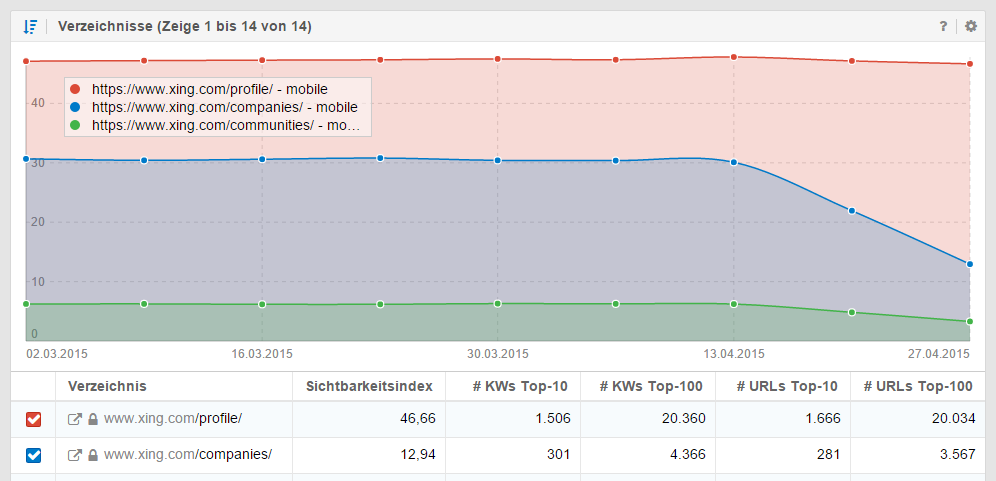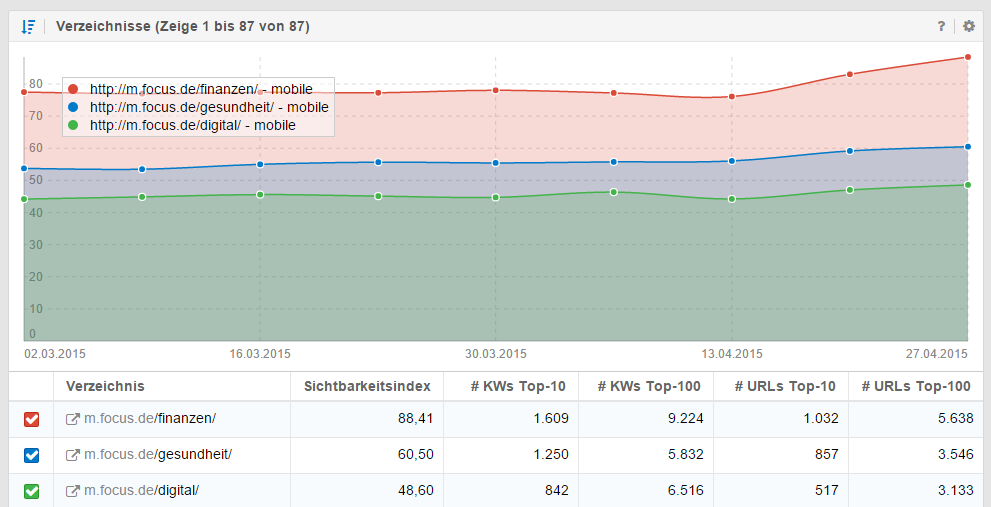A week ago today, accompanied by much media interest, Google introduced the usability of websites on smartphones as a ranking factor for mobile searches. Unlike the well-known “penalty updates”, such as Penguin and Panda, it wasn’t an algorithm that could be armed and that directly had its full, negative effect. The effects of the new mobile ranking factor only reveal themselves after the Google bot has crawled a firm page and tested its mobile friendliness.
The dust has begun to settle: Google was busy last week and the first results of the new ranking factor are starting to come to light. Unlike as with the Panda/Penguin updates, we don’t want to publish a list of winners and losers on the blog. That’s because we, as the SEO branch, don’t firstly have to work out the causes with this update. Google made completely clear and transparent from the outset the criteria by which mobile-friendly sites will be ranked. There’s even a free test tool from Google to carry out this check right away and as often as you like. As an alternative, we want to show a few examples that are symptomatic of many sites that have lost or gained rankings through the mobile update.
Well-known mistakes more severely punished
It’s nothing new that Google is concerned about the usability of websites via mobile devices. Websites which are generally unusable have long been more negatively ranked. With the mobile update, Google has seemingly strengthened this filter. For example, ab-in-den-urlaub.de uses a very large interstitial page on its mobile version to convince visitors to the site to download the app – an example, that Google has listed in exactly that form as a common mistake. As a result, the desktop and smartphone visibility indexes of the domain differ greatly – a development that will likely increase as more pages are crawled.
It’s also classic configuration mistakes that lead to visibility penalties. Dict.cc, a German-English dictionary, provides both a desktop as well as a mobile version under a different URL. Unfortunately, there’s no machine-readable hint for the Google bot that a version optimized for mobile devices exists. Google specifies the integration of the rel=alternate code detailed in the guidelines for mobile SEO.
Assessment on an URL basis
A big difference to the last updates is that, with the mobile-friendly test, Google assesses every URL individually and independent from one another. Therefore, there’s no ranking loss for the entire domain, but instead only those URLs which don’t meet Google’s requirements lose out. With large and complex websites, in particular, this leads to interesting results. For example, the personal profiles on Xing (xing.com/profile/*), which presumably account for a large amount of the traffic, are optimized for viewing on mobile devices. They experienced no notable movements as a result of the mobile update. However, it’s a different story for the company profiles (xing.com/companies/*). They seemingly haven’t undergone a mobile-friendly facelift and don’t meet Google’s expectations. A large amount of the mobile visibility loss therefore stems from this index.
An update with winners
For a long while, Google updates have generally followed the pattern that a list of websites that haven’t fulfilled certain standards fall out of the Google results or at least are ranked notably worse. With this atypical update there’s also been a break from this trend: Many websites are ranking better than previous with their mobile offering. Google has thus been true to its announcement to give good websites a boost. That Wikipedia.org is, in absolute numbers, the biggest winner of all should be no surprise, but the mobile financial service of focus.de can also feel pleased right now.
Conclusion
The Google mobile update is on many fundamental points different from the last large algorithm alterations. Google had already made the criteria clear long in advance. Comprehensive and very well made instructions have been provided by Google on how to make a site fit for the update. Google even offers a tool to test changes. The otherwise so important and yet uncertain aspect of studying the causes has therefore been totally eliminated – and with that, the main chunk of the actual SEO work. With is update, only the supervising of the correct implementation remains left for search machine optimizers – what effects this will have on the SEO branch will be shown in the future.


